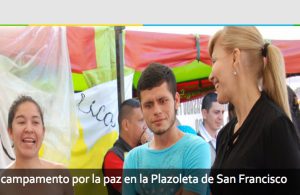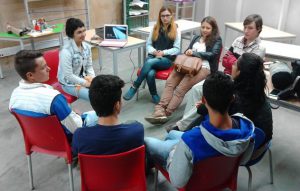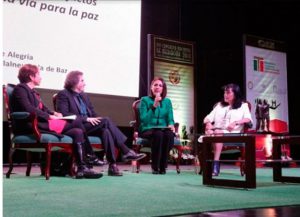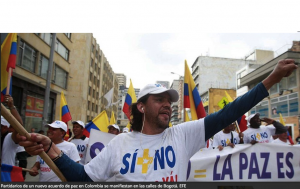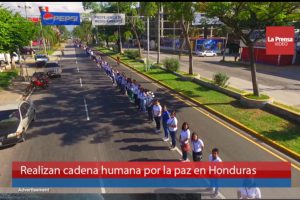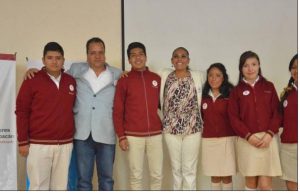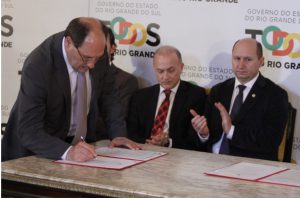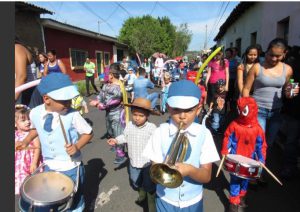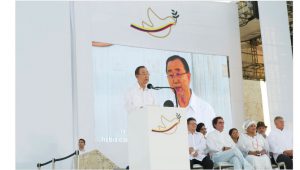FREE FLOW OF INFORMATION
An article from El País Vallenat (translated by CPNN)
85 students from eight public educational institutions in La Jagua de Ibirico, Becerril and El Paso and two corregimientos, La Victoria de San Isidro and La Loma, held the 2016 closing event of the collective Juntos por La Paz, an initiative of the Prodeco Group that trains young students in peace issues in the context of the Colombia Postconflict peace process.
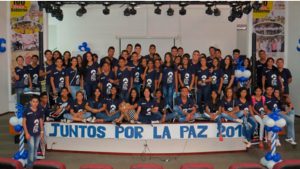
The closing event of the year was held at the auditorium Centro Virtua of La Jagua de Ibirico, and was attended by young students and the presence of Amaury Padilla, director of the Development and Peace Program of Cesar, who was in charge of a workshop on care and self-care in peacebuilding.
Throughout the year, students were formed into working groups for the production of a radio program to combat disinformation about the process of Peace Talks held between the FARC-EP and the National Government and to promote values for peace.
In total, 20 radio programs were produced. They were broadcast on Energy 96.7 and half of these (10) in Caracol Radio Valledupar. For this, it was necessary to consult more than 15 sources of information, including Governors, Mayors; Representatives of National and Local Government and professionals in different social areas, such as psychologists, pedagogues and teachers. In their work as program reporters, a total of 25 interviews were conducted.
The students also held two days of reading and studying the first final agreement between the National Government of Colombia and the FARC EP. This promoted responsible and informed voting on the referendum.
Thanks to their participation in the group, the young people started activities to promote healthy coexistence inside and outside their educational institution, activities that included civic marches, socialization meetings with adults and parents and play for children.
